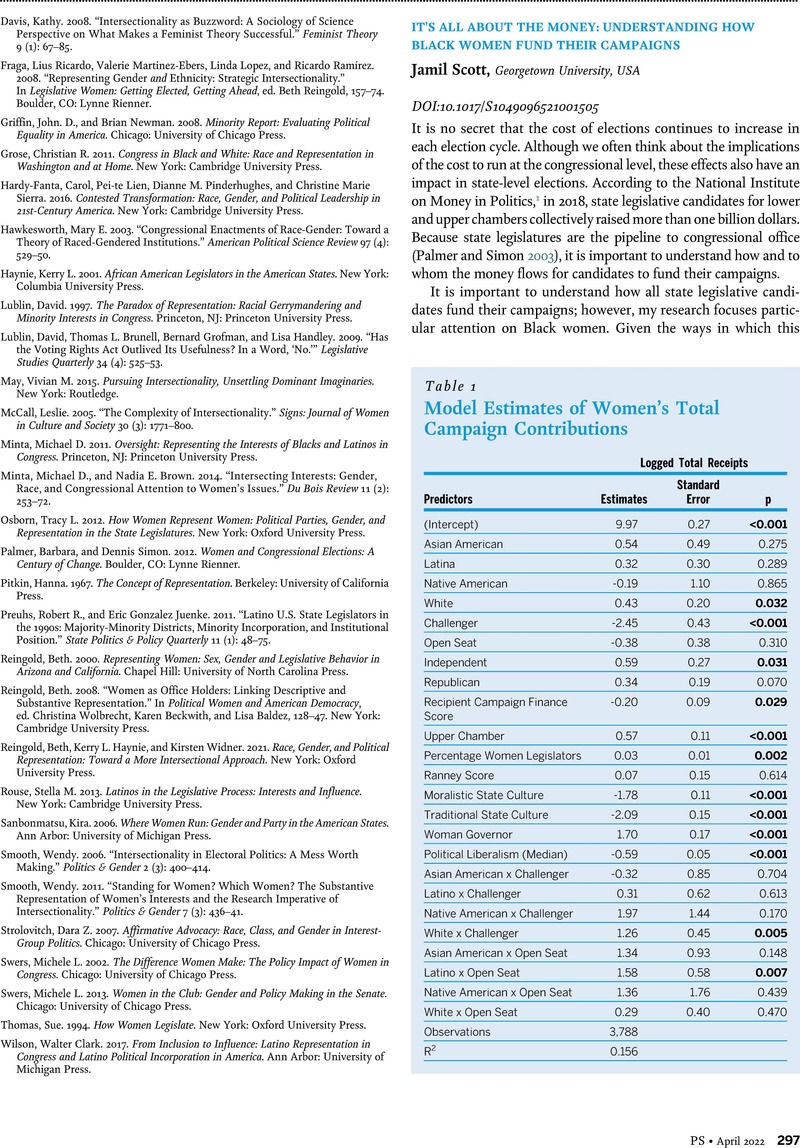Crossref Citations
This article has been cited by the following publications. This list is generated based on data provided by Crossref.
Sorensen, Ashley
and
Chen, Phil
2023.
She works hard for the money: explaining racial and gender disparities in candidate success in primary elections.
Politics, Groups, and Identities,
p.
1.





